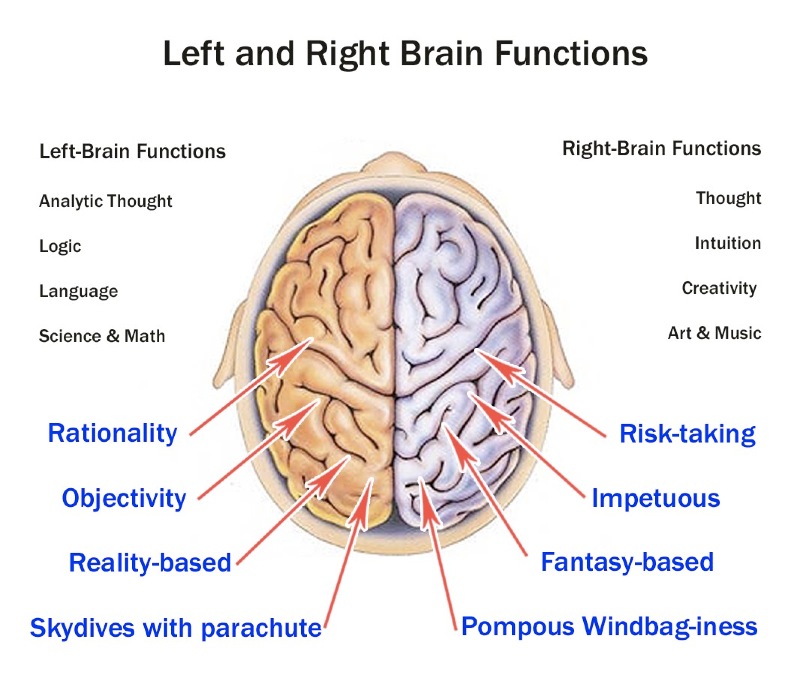El método LARC (en inglés “left and right creativity) es un proceso paso por paso que pone al lado derecho del cerebro (vinculado a la creatividad) en funcionamiento junto con el lado izquierdo (vinculado a la lógica). Cada fase del programa sugiere especificaciones técnicas fáciles de seguir.
 ?La técnica deriva del libro “Unleasing the Right Side of the Brain”, de Robert Williams y John Stockmyer, publicado en 1987.
?La técnica deriva del libro “Unleasing the Right Side of the Brain”, de Robert Williams y John Stockmyer, publicado en 1987.
El hemisferio derecho del cerebro puede ser estimulado utilizando dibujos e imágenes visuales. Existen cuatro versiones del LARC y cada una es un completo sistema para la estimulación de ideas creativas.
Entre ellas, el LARC 1 consiste en un conjunto de ejercicios que generan prontas e imaginativas soluciones a varios problemas.
LARC 1
- Dibujando
- Deshaciendo
- Creando ?
Dibujando
Realice dibujos de cada palabra o concepto que usará en la técnica. Haga dibujos específicos para términos específicos (casa, escuela) y dibujos simbólicos para términos simbólicos (destrucción, amor). Realice los dibujos desde diferentes ángulos y perspectivas para cada palabra.
Deshaciendo
Use una de las siguientes listas –activo, pasivo, simple, complejo- para separar en trozos sus términos. Las preguntas simples son para problemas fáciles, las complejas para problemas más duros.
Las preguntas pasivas son buenas cuando los términos a deshacer no tienen independencia de acción o no actúan por si solos. En cambio, las activas son utilizables cuando los términos a deshacer pueden controlar sus acciones –gente, animales, organizaciones-.
No importa mucho realmente sobre las listas porque las preguntas son realizadas para estimular ideas. Si no está seguro entre simple y complejo, utilice el complejo.
| Pasivo | Activo | ||
| Simple | Complejo | Simple | Complejo |
| Tipos?Pasos?Partes?Causas?Cuándo?Por qué?Cómo?Cosas con las que está conectado Imágenes visuales de ?Productos o resultados |
Tipos?Pasos?Partes?Causas?Sinónimos?Quién?Qué?Cuándo?Dónde?Por qué?Cómo?Cosas con las que está conectado?Imágenes visuales de Imágenes auditivas de?Emociones?Opuestos?Imágenes táctiles de?Características ?Productos o resultados?Modos de operación |
Habilidades?Temor o amenazas?Aciertos y esperanzas?Fortalezas?Debilidades?Tipos?Pasos?Cosas conectadas con?Imágenes visuales de Características |
Habilidades?Temor o amenazas?Aciertos y esperanzas?Responsabilidades Intereses?Gustos?Disgustos?Fortalezas?Debilidades?Tipos?Causas?Pasos?Cómo comenzó Quién es?Dónde?Cuándo?Cosas conectadas con?Imágenes visuales de Características?Productos o resultados |
?Creando
Haga el recuento de las respuestas a las preguntas de “deshaciendo” y reflexione detenidamente sobre cada “pedazo” para comenzar con las ideas.
Learning with a Right Brained Child
Now that you have determined you have a right-brained child, what is the next step? There are simple ways to encourage your child to tap into both sides of his brain, which not only allows his dominant side to shine, but balances his whole being.
Use your child’s creativity to help utilize his left-brain strengths. Most right brain dominant children enjoy learning through doing. Turn his next challenging math assignment into a creative experience by encouraging his brain to think in different ways. Spend time talking through the assignment with your child, or even act out his ideas, and have him take notes to help him remember details later. Not only will this help him stay on track, but encourage his linear left brain to work alongside his creative right.
When your child is ready to get working, encourage him to work alone. Often right-brained children enjoy working with others, which may lead to wonderful and exciting learning opportunities within the classroom, but can take a child off-task when completing homework. Tap into his left-brain by giving him some quiet space to focus on the task at hand. When a task is completed, celebrate with an engrossing and engaging game or activity that your child enjoys as a reward for his hard work.
Use your child’s visual brain to its best by encouraging his learning through using color. For instance, when studying for an upcoming spelling test offer your child a pre-test and then focus on the words he has trouble spelling. The HSLDA (Home Schooling Legal Defense Association) suggest writing out the misspelled words on cards, with the letters that are incorrect in a different color. For instance, if your child writes Saturday as “Saterday” write the correct letters in black and the incorrect “e” as a “u” but in red. Help your child make the flash cards together to encourage his left and right brain to work together.
Take your time, and encourage your child to do the same. Visual-spatial learners do not work well under pressure. Although, in most cases, school tests are timed, while at home, offer your child as much time as he needs to get his work done. If your child seems to be challenged with an activity, encourage him to draw a picture or create chart to show how he visualizes the activity. Offer assistance and encouragement without judgment or getting frustrated if things are taking a bit longer than desired.
When in the classroom, offer the right-brain dominant child lots of opportunities for visual learning, which means including charts in lectures and visuals when discussing an assignment, such as pictures of birds when learning about migration. All children enjoy looking at visuals when learning, so including additional images as often as possible only aides in everyone’s learning.
Having a right brained dominant child may seem like a roller coaster at times, with moments of total excitement and crashes with great disappointments. Working alongside your child is key, no matter his learning style, which encourages positive learning for years to come.
By Sarah Lipoff. Sarah http://www.funderstanding.com/v2/brain/right-brain-dominant-learners/
